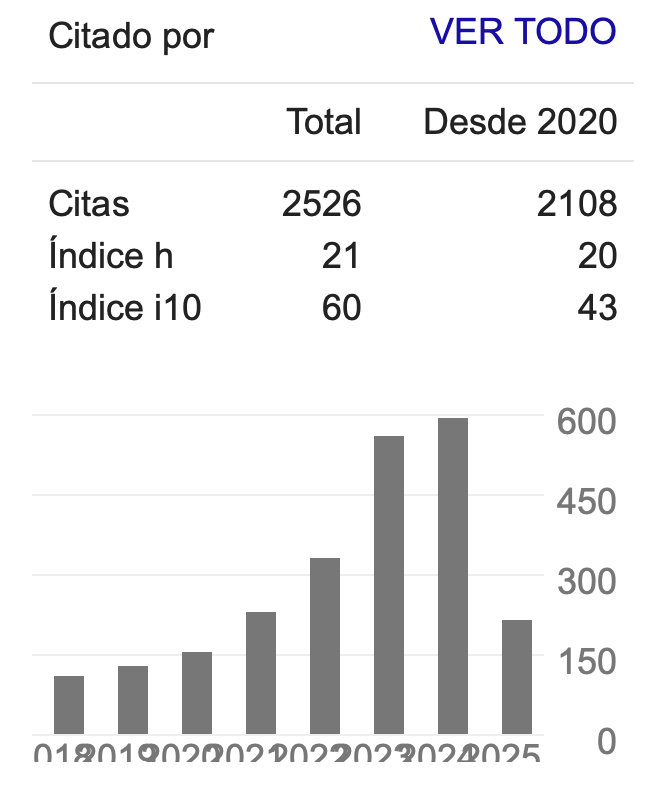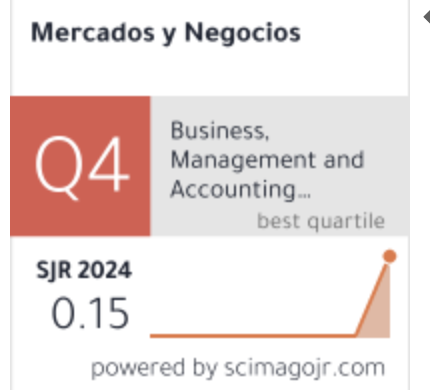Impact of E-Service Quality of Mobile Application on Customer Perceived Value
DOI:
https://doi.org/10.32870/myn.vi55.7818Keywords:
Service quality, CPV, online shopping, consumer satisfaction, BengaluruAbstract
The present study examines the effect of mobile app service quality on consumer perceived value (CPV) in online shopping in India, specifically in Bengaluru, and customer satisfaction (CS) on CPV. A quantitative research method was employed, in which data were collected from 222 randomly selected consumers using structured questionnaires and interviews. The analysis was conducted in R Studio, utilizing analyses that included discriminant validity, confirmatory factor analysis, and structural equation modeling (SEM). The findings indicate that mobile app service quality has a significant impact on CPV, with reliability and consumer service being the most critical dimensions. In contrast, content quality was the least essential of the dimensions. Additionally, CS had a significantly positive effect on CPV and partially mediated the relationship between content quality, navigation, visual design, contact, and CPV.References
Alhassan, S., Basit, F., Ibrahhim, S., & Awini, G. (2025). Does E-Service Quality Heighten Customer Satisfaction and Loyalty? In Digital Transformation in the Customer Experience (pp. 53-71): Apple Academic Press.
AlSondos, I., & Salameh, A. (2020). The effect of system quality and service quality toward using m-commerce service, based on consumer perspective. Management Science Letters, 10(11), 2589-2596.
Anwar, A., Thongpapanl, N., & Ashraf, A. (2021). Strategic imperatives of mobile commerce in developing countries: the influence of consumer innovativeness, ubiquity, perceived value, risk, and cost on usage. Journal of Strategic Marketing, 29(8), 722-742. https://doi.org/10.1080/0965254X.2020.1786847
Aqeel, S. (2021). A Usability Evaluation of M-commerce Apps. University of Sindh Journal of Information and Communication Technology, 5(4), 184–207.
Basoglu, N., Daim, T., & Sofuoglu, E. (2009). A decision methodology for customising software products. International Journal of Industrial and Systems Engineering, 4(5), 554-576. https://doi.org/10.1504/IJISE.2009.024158
Baur, N. (2019). Linearity vs. circularity? On some common misconceptions on the differences in the research process in qualitative and quantitative research. Frontiers in Education, 4. https://doi.org/10.3389/feduc.2019.00053
Butt, S., & Umair, T. (2023). Nexus Among Online Banking Services, Perceived Value and Consumer’s Post-Adoption Behaviour. Journal of Asian Development Studies, 12(4), 1016-1032. https://doi.org/10.62345/jads.2023.12.4.81
Çelik, K. (2021). The effect of e-service quality and after-sales e-service quality on e-satisfaction. Business & Management Studies: An International Journal, 9(3), 1137–1155. https://doi.org/10.15295/bmij.v9i3.1898
Chopdar, P., & Balakrishnan, J. (2020). Consumers’ response towards mobile commerce applications: SOR approach. International Journal of Information Management, 53, 102106. https://doi.org/10.1016/j.ijinfomgt.2020.102106
Cronin Jr, J., & Taylor, S. (1992). Measuring service quality: a reexamination and extension. Journal of Marketing, 56(3), 55–68. https://doi.org/10.1177/002224299205600304
Dastane, O., Goi, C., & Rabbanee, F. (2020). A synthesis of constructs for modelling consumers’ perception of value from mobile-commerce (M-VAL). Journal of Retailing and Consumer Services, 55, 102074. https://doi.org/10.1016/j.jretconser.2020.102074
Duan, Y., Liu, T., & Mao, Z. (2022). How online reviews and coupons affect sales and pricing: An empirical study based on e-commerce platform. Journal of Retailing and Consumer Services, 65, 102846. https://doi.org/10.1016/j.jretconser.2021.102846
Farhat, R., Yang, Q., Ahmed, M., & Hasan, G. (2025). E-Commerce for a Sustainable Future: Integrating Trust, Product Quality Perception, and Online-Shopping Satisfaction. Sustainability, 17(4), 1431. https://doi.org/10.3390/su17041431
Guzman, V., & Al-Hakimi, M. (2024). Adapting E–Commerce Success Factors to Service-Oriented E–Business: A Comparative Analysis. Master’s Thesis in Industrial Management and Innovation. Uppsala University.
Halim, E., Gui, A., Valencia, G., & Kurniawati, Y. E. (2025). The Impact of Website Design, E-Service Quality, Satisfaction, Trust to Intention to Purchase Skin Care Products in the E-Marketplace. 19th International Conference on Ubiquitous Information Management and Communication (IMCOM).
Hamilton-Ibama, E., & Ogonu, C. G. (2022). Customer perceived value and customer satisfaction of hotels in Port Harcourt, Nigeria. South Asian Journal of Marketing & Management Research (SAJMMR), 12(1-2), 75-93.
Hanaysha, J., Shriedeh, F., & Gulseven, O. (2025). Impact of website quality, product assortment, customer reviews, and perceived service quality on online loyalty: the role of perceived value as a mediator. Cogent Business & Management, 12(1), 2433706. https://doi.org/10.1080/23311975.2024.2433706
Hassan, H. E. (2024). The role of mobile shopping service quality in enhancing customers M-satisfaction, M-loyalty, and E-word of mouth. Future Business Journal, 10(1), 109. https://doi.org/10.1186/s43093-024-00396-4
Hossain, S., Xi, Z., Nurunnabi, M., & Hussain, K. (2020). Ubiquitous role of social networking in driving M-Commerce: evaluating the use of mobile phones for online shopping and payment in the context of trust. Sage Open, 10(3), 2158244020939536. https://doi.org/10.1177/21582440209395
Hsiao, M. (2022). Post-purchase behaviour from customer perceived value of mobile payment services. Journal of Modelling in Management, 17(4), 1524–1543. https://doi.org/10.1108/JM2-11-2020-0293
Huang, E., Lin, S., & Fan, Y. (2015). MS-QUAL: Mobile service quality measurement. Electronic Commerce Research and Applications, 14(2), 126–142. https://doi.org/10.1016/j.elerap.2015.01.003
Huma, S., Ahmed, W., Ikram, M., & Najmi, A. (2024). Influence of mobile application service quality and convenience on young customer retention. Spanish Journal of Marketing-ESIC. https://doi.org/10.1108/SJME-11-2023-0310
Kandampully, J. (1998). Service quality to service loyalty: A relationship which goes beyond customer services. Total Quality Management, 9(6), 431-443. https://doi.org/10.1080/0954412988370
Kandel, B. (2020). Qualitative versus quantitative research. Journal of Product Innovation Management, 32(5), 658.
Lakens, D. (2022). Sample size justification. Collabra: psychology, 8(1), 33267. https://doi.org/10.1525/collabra.33267
Lin, K., Wang, Y., & Huang, T. (2020). Exploring the antecedents of mobile payment service usage: Perspectives based on cost–benefit theory, perceived value, and social influences. Online information review, 44(1), 299-318. https://doi.org/10.1108/OIR-05-2018-0175
Lucas, G., Lunardi, G., & Dolci, D. (2023). From e-commerce to m-commerce: An analysis of the user’s experience with different access platforms. Electronic Commerce Research and Applications, 58, 101240.
Marcos, A. & Coelho, A. (2022). Service quality, customer satisfaction and customer value: holistic determinants of loyalty and word-of-mouth in services. The TQM Journal, 34(5), 957–978. https://doi.org/10.1108/TQM-10-2020-0236
Maxwell, J. (2021). Why are qualitative necessary for generalization? Qualitative Psychology, 8(1), 111. https://doi.org/10.1037/qup0000173
Mcleod, S. (2023). Qualitative vs. Quantitative Research Methods and Data Analysis. simplypsychology. org Available: https://www. simplypsychology. org/qualitative-quantitative. html [Accessed Feb. 12th, 2023].
Miao, M., Jalees, T., Zaman, S., Khan, S., Hanif, N., & Javed, M. (2022). The influence of e-customer satisfaction, e-trust and perceived value on consumer's repurchase intention in B2C e-commerce segment. Asia Pacific Journal of Marketing and Logistics, 34(10), 2184–2206. https://doi.org/10.1108/APJML-03-2021-0221
Mohajan, H. (2020). Quantitative research: A successful investigation in natural and social sciences. Journal of Economic Development, Environment and People, 9(4), 50–79.
Oloveze, A., Okonkwo, R., Nwachukwu, C., Ogbonna, C., & Chukwuoyims, K. (2022). User behaviour on continuance intention to use M-commerce in African context: mediating effect of perceived value. LBS Journal of Management & Research, 20(1/2), 21-33. https://doi.org/10.1108/LBSJMR-05-2022-0018
Omar, S., Mohsen, K., Tsimonis, G., Oozeerally, A., & Hsu, J. (2021). M-commerce: The nexus between mobile shopping service quality and loyalty. Journal of Retailing and Consumer Services, 60, 102468. https://doi.org/10.1016/j.jretconser.2021.102468
Osman, I., Omar, E., Ratnasari, R., Furqon, C., & Sultan, M. (2024). Perceived service quality and risks towards satisfaction of online halal food delivery system: from the Malaysian perspectives. Journal of Islamic Marketing, 15(9), 2198-2228. https://doi.org/10.1108/JIMA-06-2023-0176
Ou, C., Chen, K., Tseng, W., & Lin, Y. (2022). A study on the influence of conformity behaviors, perceived risks, and customer engagement on group buying intention: A case study of community e-commerce platforms. Sustainability, 14(4), 1941. https://doi.org/10.3390/su14041941
Parasuraman, A., Zeithaml, V. & Berry, L. (1988). Servqual: A multiple-item scale for measuring consumer perc. Journal of Retailing, 64(1), 12.
Parasuraman, A., Zeithaml, V., & Malhotra, A. (2005). ES-QUAL: A multiple-item scale for assessing electronic service quality. Journal of Service Research, 7(3), 213-233. https://doi.org/10.1177/1094670504271156
Revathi, M., & Kavitha, P. (2025). The impact of perceived e-service quality, service value, usefulness and trust on customer perceptions on e-service satisfaction towards e-traveling service. International Journal of Management (IJM), 16(2).
Sharma, A., Joshi, R., & Wali, O. (2020). Human Capital: A Key Driver of Consumer Decision-making in Online Promotion (An Application of Grounded Theory in Exploratory Research). Asia-Pacific Journal of Management Research and Innovation, 16(2), 132–145. https://doi.org/10.1177/2319510X209312
Shrestha, N. (2021). Factor analysis as a tool for survey analysis. American Journal of Applied Mathematics and Statistics, 9(1), 4–11.
Sousa, S., Correia, E., Viseu, C., & Larguinho, M. (2022). Analysing the influence of companies’ green communication in college students’ green purchase behaviour: An application of the extended theory of planned behaviour model. Administrative Sciences, 12(3), 80. ; https://doi.org/10.3390/admsci12030080
Sreekumar, D. (2023). What is Quantitative Research? Definition Methods Types and Examples| Researcher. Life. Researcher. life.
Stocchi, L., Pourazad, N., Michaelidou, N., Tanusondjaja, A., & Harrigan, P. (2022). Marketing research on Mobile apps: past, present and future. Journal of the Academy of Marketing Science, 1-31. https://doi.org/10.1007/s11747-021-00815-w
Stratton, S. (2021). Population research: convenience sampling strategies. Prehospital and disaster Medicine, 36(4), 373–374. https://doi.org/10.1017/S1049023X21000649
Susiang, M., Suryaningrum, D., Masliardi, A., Setiawan, E., & Abdillah, F. (2023). Enhancing customer experience through effective marketing strategies: The context of online shopping. SEIKO: Journal of Management & Business, 6(2), 437-447. https://doi.org/10.37531/sejaman.v6i2.5235
Susilawati, A., Wahyudi, F., Putra, W., Supriyanto, W., & Limpo, L. (2024). The Impact of Digital User Experience on Brand Perception and Consumer Loyalty in the E-Commerce Industry in Indonesia. The Eastasouth Journal of Information System and Computer Science, 1(03), 109-122. https://doi.org/10.58812/esiscs.v1i03.244
Taherdoost, H. (2021). Data collection methods and tools for research; a step-by-step guide to choose data collection technique for academic and business research projects. International Journal of Academic Research in Management (IJARM), 10(1), 10-38.
Thanasrichatthon, K. (2023). Influences of Customer Satisfaction, Perceived Value and Brand Personality on Customer's Purchase Intention of Luxury Cars. Bangkok University
Uzir, M., Al Halbusi, H., Thurasamy, R., Hock, R., Aljaberi, M., Hasan, N., & Hamid, M. (2021). The effects of service quality, perceived value and trust in home delivery service personnel on customer satisfaction: Evidence from a developing country. Journal of Retailing and Consumer Services, 63, 102721. https://doi.org/10.1016/j.jretconser.2021.102721
Wattoo, M., Du, J., Shahzad, F., & Kousar, S. (2025). Shaping E-commerce Experiences: Unraveling the Impact of Service Quality on Youth Customer Behavior in a Developing Nation. SAGE Open, 15(1), 21582440241311786. https://doi.org/10.1177/21582440241311
Wirtz, J., Fritze, M., Jaakkola, E., Gelbrich, K., & Hartley, N. (2021). Service products and productization. Journal of Business Research, 137, 411-421. https://doi.org/10.1016/j.jbusres.2021.08.033
Wu, B., & Andrizal, K. (2021). Perceived value and willingness to consume in online mobile games. Social Behavior and Personality: an International Journal, 49(5), 1-10. https://doi.org/10.2224/sbp.10193
Yadav, S., Kumar, A., & Sinha, A. (2024). Modeling the Critical Success Factors for Continuous Usage Intention of Foodservice Mobile Apps Journal of Foodservice Business Research, 1–22. https://doi.org/10.1080/15378020.2024.2421051
Yunus, N., Mohd, M., Salleh, N., & Ibrahim, N. (2024). The Impact of E-Service Quality on E-Loyalty: In the case of Online Shopping Mobile Applications in Malaysia. International Journal of Academic Research in Business and Social Science, 14(8).
Published
How to Cite
Issue
Section
License
Copyright (c) 2025 Rohit Kumar Sharma, Sanjeev Padashetty S

This work is licensed under a Creative Commons Attribution-NonCommercial 4.0 International License.
Mercados y Negocios by Department of Mercadotecnia y Negocios Internacionales. University of Guadalajara is licensed under a License Creative Commons Attribution-NonCommercial 4.0 International.
The author retains the copyright.








